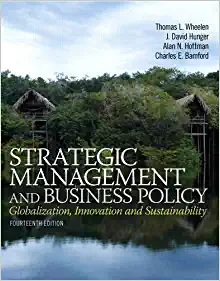Question
3.Real Economy and Productive Government Spending (25 pts) (There will be equations in this question but you shouldn't have to derive anything, they are just
3.Real Economy and Productive Government Spending (25 pts) (There will be equations in this question but you shouldn't have to derive anything, they are just there to explicitlydescribe government spending on infrastructure so you can logically think through the questions which will begraphical and require explanations). Suppose we have a full model of the real economy this means we have a labormarket, and a goods market. These markets are for the most part standard in that we have an upward sloping laborsupply curve, an upward sloping savings demand curve, a downward sloping labor demand curve and a downwardsloping investment demand curve. We will make one change to this market and that is the notion that governmentspending sometimes takes on the form of infrastructure spending. For our market let us assume that TFP (A)instead has two factors and evolves over time by the following equation
At+t= At+ t+ (FtM )
Where trepresents an exogenous technology factor and Ftrepresents new infrastructure spending this period and Mis the required cost to maintain the current level of infrastructure. This means that absent any new technology or newgovernment spending on infrastructure we would expect TFP to remain constant. Though an increase or decreasein government spending on infrastructure or an increase or decrease in the technology factor would permanently increase or decrease TFP respectively. Government spending is then give as Gt= Ot+ Ft
Where Otrepresents government spending that is on other non-infrastructure spending. The government raises revenue with lump sum taxation, and for now suppose they are unable to borrow.
(a) Suppose that government decides it needs to do budget cuts and it decreases it's spending on otherpurchases (Otgoes down). Show graphically how you would represent this in both the labor market, andthe goods market. What happens to the equilibrium quantity of labor, output, the wage rate, consumption,investment and the real interest rate? If something is uncertain you may say that there are two effects and itis unclear what the total effect is. (This is a one time decrease and Otreturns to its previous level after)
(b) Now suppose that the government instead decides to cut the budget by decreasing infrastructurespending so that Ftdecreases. Show graphically how you would represent this in both the labor market, andthe goods market. What happens to the equilibrium quantity of labor, output, the wage rate, consumption,investment and the real interest rate? How is this different from part (a) (This is a one time decrease and Ft,returns to its previous level after)
(c) Now suppose that the government decides to increase their spending on infrastructure spending soFtincreases (Once again one time only). This time however, they can fund it through borrowing. SupposeRicardian Equivalence holds. Show graphically how you would represent this in both the labor market andthe goods market. What happens to the equilibrium quantity of labor, output, the wage rate, consumption,investment and the real interest rate?
(d) Now suppose that Ricardian equivalence does not hold and the infrastructure spending is still financedthrough borrowing as in part (c). In fact consumers do not perceive the increase in government borrowing asimpacting their lifetime income at all! How does this change your answer to part (c)? What variables see largereffects?
| ReplyForward |
Step by Step Solution
There are 3 Steps involved in it
Step: 1

Get Instant Access to Expert-Tailored Solutions
See step-by-step solutions with expert insights and AI powered tools for academic success
Step: 2

Step: 3

Ace Your Homework with AI
Get the answers you need in no time with our AI-driven, step-by-step assistance
Get Started


